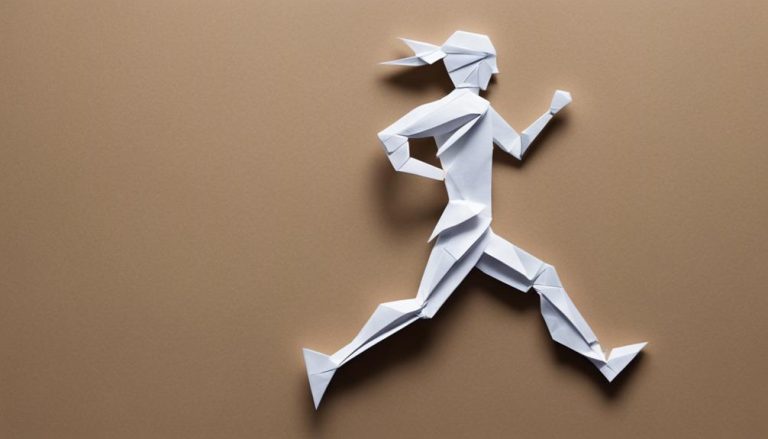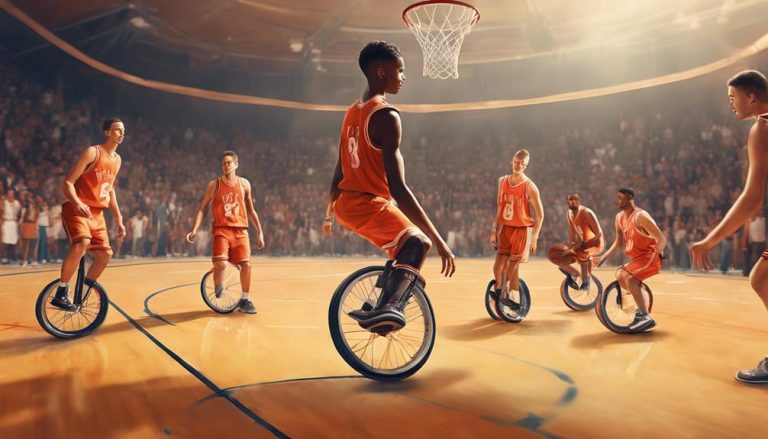General Rules of High Jump
To excel in high jump, nail your approach run for speed and momentum. Precise takeoff technique is key — focus on form and timing. Understand your clearance height and work on your vertical leap and strength. Avoid fouls by knowing the rules inside out. Gear up with high jump spikes and confirm equipment meets safety standards. Master these rules for success and push yourself toward personal bests.
Approach Run
When preparing for the high jump, perfecting your approach run is essential for achieving peak performance. Speed control is important during the approach run. You need to find the right balance between building momentum and maintaining control to propel yourself over the bar successfully. Focus on your foot placement with each stride to guarantee a strong and stable foundation for takeoff.
Angle adjustment plays an important role in the high jump. As you approach the bar, pay attention to your body positioning and the angle of your approach. A slight adjustment can make a significant difference in your trajectory over the bar. This, in turn, impacts power generation during takeoff. By optimizing your angle, you can harness more power from your run-up to propel yourself to greater heights.
Mastering the approach run sets the stage for a successful high jump. Paying attention to speed control, foot placement, angle adjustment, and power generation will enhance your performance and help you soar to new heights.
Takeoff Technique
To excel in the high jump, your takeoff technique must be precise and powerful, building upon the foundation laid by your approach run. Proper form is essential during takeoff. As you approach the bar, make sure your body is upright, with your knees driving up towards your chest. This position allows for maximum energy transfer into the jump. Timing and speed are also key. You should aim to take off at the peak of your jump, just as your body begins to extend upwards. This maximizes the force you can generate to propel yourself over the bar.
Correct body position is vital for a successful takeoff. Your arms should be back as you leave the ground, ready to drive upwards as your body extends. Your head should be neutral, looking straight ahead to maintain balance. Finally, execute a powerful jump by pushing forcefully off the ground with your takeoff leg. This explosive action will give you the height needed to clear the bar effectively and efficiently. Mastering these elements of the takeoff technique will set you up for a successful high jump.
Clearance Height
Understanding the clearance height is essential for high jumpers aiming to achieve their best performance and surpass personal records. The clearance height refers to the bar's position that you must jump over without knocking it down. To clear greater heights, focus on improving your vertical leap, which is the maximum height you can reach off the ground. Enhancing your flexibility is important as it allows you to arch your body effectively over the bar.
Speed and strength play significant roles in successfully clearing higher heights. Speed helps you approach the bar with momentum, converting horizontal speed into vertical lift. Building strength in your legs and core is crucial for explosive power during takeoff, enabling you to propel yourself higher. Practicing proper technique and consistently challenging yourself to raise the bar height gradually will push your limits and help you achieve new personal bests. Remember, each successful clearance is a victory, showcasing your progress and determination in the high jump.
Foul Rules
Mastering the foul rules is essential for high jumpers aiming for flawless performances and avoiding penalties that could impede their progress. Common mistakes that lead to fouls include brushing the bar on the way up, dislodging it with any part of the body, or taking off from beyond the foul line. Penalty consequences for fouls vary but often result in the failed attempt not counting towards the final score. Understanding these rules is important as accumulating fouls can lower your overall performance and potentially cost you the competition. To prevent fouls, make sure you have a consistent approach, practice proper technique, and pay attention to your positioning during the jump. Being mindful of these aspects can help you avoid unnecessary penalties and maximize your chances of success. Remember, the more you familiarize yourself with the foul rules and actively work to prevent them, the better your chances of achieving your high jump goals.
Equipment Requirements
When preparing for high jump competitions, ensuring that you have the correct equipment is essential for optimizing your performance and safety. Proper footwear is a fundamental requirement for high jumpers. Investing in quality high jump spikes can provide you with the necessary traction and support to execute your jumps effectively. These specialized shoes are designed to enhance your performance by providing stability during take-off and landing.
In addition to proper footwear, adhering to safety standards is vital in high jump competitions. Make sure that the landing mat meets the required specifications to guarantee adequate cushioning and protection upon landing. Inspect the crossbar for any defects or damage that could jeopardize your safety during the event. It is also essential to check that the uprights are securely positioned to prevent any accidents while attempting your jumps.
Frequently Asked Questions
What Are Some Common Mistakes That High Jumpers Make During the Competition That Can Affect Their Performance?
When high jumping, common mistakes like losing mental focus under competition pressure can impact your performance. Stay present, visualize success, and maintain confidence to overcome challenges and soar to new heights.
How Do High Jumpers Mentally Prepare Themselves Before Attempting a New Personal Best Height?
As you stand at the edge of your potential, close your eyes and plunge into the depths of your mind. Visualize each leap, feel the bar grazed by your spirit. In mental rehearsals, you conquer heights before your body follows.
What Are Some Recommended Strength and Conditioning Exercises for High Jumpers to Improve Their Performance?
To enhance your high jump performance, try incorporating plyometric drills, weightlifting, sprint training, and core exercises into your routine. These exercises can help you build explosive power, strength, speed, and stability, ultimately boosting your jumping ability.
How Can High Jumpers Work on Their Flexibility to Improve Their Form and Technique?
Flexibility drills and stretching routine are key. Yoga practice and mobility exercises enhance your form. Engage in dynamic stretches pre-workout. Expand flexibility with static stretches post-workout. Elevate your high jump game with consistent flexibility work.
Are There Any Specific Nutritional Guidelines That High Jumpers Should Follow to Optimize Their Performance and Recovery?
To optimize your performance and recovery as a high jumper, focus on hydration tips and recovery strategies. Prioritize pre-competition meals and consider performance supplements. These guidelines can enhance your energy levels and support your body throughout training and competitions.






